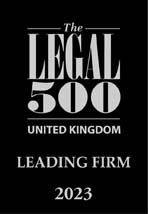There has been a recent spate of high profile money laundering investigations and prosecutions by the US authorities involving the art world one way or another, for example: the seizure of the painting ‘Hannibal’ by Jean-Michel Basquiat by the US as part of the Brazilian banker Edeman Cid Ferreira fraud/tax evasion prosecution; the arrest and pending prosecution of international art dealer Helly Namad concerning allegations of money laundering for the Russian mafia; the return of $33 million worth of art to a victim hedge fund in the prosecution of former lawyer Mark Dreier by US Marshals; and the case against Glafira Rosales concerning an allegedly fraudulent $30 million scheme involving fraudulent art sales.
British art exports have reached record levels this year, certainly since pre-financial crash levels, and foreign art enthusiasts have spent over £2 billion acquiring British art and antiques, with most of the purchases going to super-rich Russians, Chinese and Gulf nationals and residents.
It is difficult to understand why the British art scene has not, apparently, been subject to similar scrutiny by the UK authorities.
The art market is dominated by its trademark secrecy and a complete lack of transparency. Transactions can be difficult to trace with private collectors buying and selling, often through complex multi-faceted offshore structures or intermediaries and brokers.
Many of these transactions are settled in cash; monetary values are dependent upon the individual assessments of experts (not necessarily reflecting true market value) and what price the purchaser is prepared to pay.
Art is portable and relatively easy to move around. The seizure of ‘Hannibal’, as previously mentioned, is an excellent example of this. Edeman Cid Ferreira was sentenced in Brazil to 21 years imprisonment for fraud, tax evasion and money laundering. Prior to conviction he smuggled $30 million worth of art out of Brazil. The painting ‘Hannibal’ was purchased by a Panamanian company for $1million in 2004; that company tried to sell it in 2007 for $5 million and had it shipped to New York. It was dealt with by four individual shipping agents and two countries, including the UK, before it arrived in New York, without being labelled with a customs declaration as being of monetary value in the sum of $100! In the US any item sent to that country valued at less than $200 does not need a customs declaration label.
The gist of an interesting article in Der Spiegel (24 July 2013), highlights the issue of art and possible tax evasion / money laundering. It asserts that the über rich are moving their money out of the banks, purchasing art and storing them in art warehouses. This against the current international backlash against off shore accounts, as well as the US pursuit of US tax evaded monies using FATCA, various international tax agreements (and the reciprocal provision of tax and financial information), and multi-jurisdictional money laundering investigations.
Swiss governments have repeatedly delayed the application of money laundering regulations to the business of art, which is huge business for the Swiss. There are a number of large scale art warehouses in Geneva; two major European banks are also acquiring art warehouses for their customers. Luxembourg and Singapore are following Switzerland and are also building vast art warehouses with state of the art security, advertising these warehouses as ‘tax free emporiums’ and, in Singapore's case, promising discretion and tax exemption.
It cannot be a coincidence that Switzerland, Luxembourg and Singapore have long been established offshore tax havens.
There are of course money laundering regulations in the UK, Europe and the US which apply to the art business and without a doubt the larger, more established dealers and auction houses will have anti-money laundering compliance AND KYC systems in place. However, even the most cautious and professional art dealers can find themselves facing a charge under various sections of the Proceeds of Crime Act 2002 simply by acquiring or selling an item that could represent the proceeds of crime or tax evaded monies. They are very often dealing with new emerging markets and a fast changing client base.
In the UK, most art dealers will be subject to HMRC’s money laundering regulations, in place since 2004, which govern high value dealers, involving SARs and other stringent reporting conditions.
If you require any advice and assistance in relation to any of the various issues mentioned in this blog please contact us by completing our online enquiry form or call us on 020 7387 2032.










